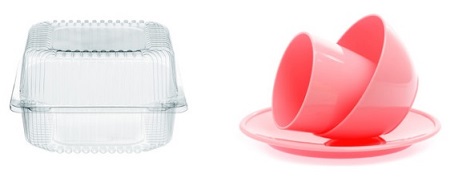Polyethylene Chemische Eigenschaften,Einsatz,Produktion Methoden
ERSCHEINUNGSBILD
WEISSER FESTSTOFF IN VERSCHIEDENEN FORMEN.
PHYSIKALISCHE GEFAHREN
Staubexplosion der pulverisierten oder granulierten Substanz in Gemischen mit Luft m?glich.
CHEMISCHE GEFAHREN
Zersetzung beim Erhitzen unter Bildung giftiger und reizender Rauche unter Feuer- und Explosionsgefahr. Reagiert sehr heftig mit Fluor. Reagiert mit starken S?urenund starken Oxidationsmitteln.
ARBEITSPLATZGRENZWERTE
TLV nicht festgelegt (ACGIH 2005).
MAK nicht festgelegt (DFG 2005).
INHALATIONSGEFAHREN
Eine bel?stigende Partikelkonzentration in der Luft kann schnell erreicht werden, besonders als Pulver.
LECKAGE
Verschüttetes Material in geeigneten und gekennzeichneten Beh?ltern sammeln; falls erforderlich durch Anfeuchten Staubentwicklung verhindern. Pers?nliche Schutzausrüstung: Atemschutzger?t, P1-Filter für inerte Partikel.
S-S?tze Betriebsanweisung:
S22:Staub nicht einatmen.
S24/25:Berührung mit den Augen und der Haut vermeiden.
Definition
Polyethylene is a flexible waxy translucentpolyalkene thermoplastic made in avariety of ways producing a polymerof varying characteristics. In the ICIprocess, ethene containing a trace of oxygen is subjected to a pressure inexcess of 1500 atmospheres and atemperature of 200°C. Low-densitypolyethene (r.d. 0.92) has a formulaweight between 50 000 and 300 000,softening at a temperature around110°C, while the high-density polythene(r.d. 0.945–0.96) has a formulaweight up to 3 000 000, softeningaround 130°C. The low-density polymeris less crystalline, being more atactic.Polyethene is used as aninsulator; it is acid resistant and iseasily moulded and blown.
Polyethylene is a water-repellent, white, tough, leathery, thermoplastic resin very similar in appearance to paraffin wax. Properties vary from a viscous liquid at low molecular weights to a hard waxlike substance at high molecular weights. It is used as a coating for glass bottles and fiberglass fabrics (special treatments for glass are required to obtain good adhesion between polyethylene and glass) and is also used as an injection-molding material for ceramics.
In the polymerization process, the double bond connecting the carbon atoms is broken. Under the right conditions, these bonds reform with other ethylene molecules to form long molecular chains. Ethylene copolymers, EVA, and EEA are made by the polymerization of ethylene units with randomly distributed comonomer groups, such as vinyl acetate (VA) and ethyl acrylate (EA).
Verwenden
Polyethylene (PE) is a thermoplastic polymer consisting of long hydrocarbon chains. PE is used in a number of applications including flexible film packaging produced by the blown film process. Polyethylene is used to regulate viscosity, suspension properties, and general stability in cosmetic formulations. Typical applications included specialty injection molded parts, in these fields Polyethylene has a wide range of uses:
Injection and blow molded toys, housewares and lids.
Injection molded car seats, mower parts and pails.
Injection molded, thin-walled containers and housewares.
Hot melt coating for paper, additive in cast moldings, candles, oil-based inks and hot melt adhesives.
Additive to unsaturated polyesters, epoxides and other polymers to impart the unique properties of UHMWPE. Used in industrial parts, coatings and wear surfaces at 10-40 wt. %.
Film applications having good drawdown and toughness.
Mold release additive, lubricant in rubber processing, extrusion and calendering aid for PVC and dispersing aid for color concentrates.
Bearings, gears, bushings and other moving parts.
Laboratory tubing; in making prostheses; electrical insulation; packaging materials; kitchenware; tank and pipe linings; paper coatings; textile stiffeners.
polyethylene is used to regulate viscosity, suspension properties, and general stability in cosmetic formulations. It is derived from petroleum gas or dehydration of alcohol.

Vorbereitung Methode
Linear PE is produced by a low-pressure solution or gasphase process that is initiated by a variety of transition metal catalysts. The most common catalysts are Ziegler titanium compounds with aluminum alkyls and Phillips chromium oxide-based catalysts. The gas-phase and slurry processes are used to produce high molecular weight, high-density (HMW-HDPE) products. The highest density linear PEs can be made from an α-olefin comonomer, typically octene for the solution process and butene or hexene for the gas-phase process. Linear PE does not have long-chain branches and is therefore more crystalline. The short-chain branches found in linear PE serve as tie molecules, which give the higher α -olefin copolymers improved puncture and tear properties. Included in the linear PE family are ultra-low-density PE (ULDPE), LLDPE, and HDPE.
HDPE’s main use is in blow-molded products such as milk bottles, packaging containers, drums, car fuel tanks, toys, and houseware. Film and sheet are widely used in wrappings, refuse sacks, carrier bags, and industrial liners. Injection molding products include crates, pallets, packaging containers, houseware, and toys. Extrusion grades are used in pipes, conduit, wire coating, and cable insulation.
LLDPE is a thermoplastic that in many applications replaces its predecessor, low-density polyethylene (LDPE), or is used in blends with LDPE. In particular, LDPE’s shortchain branching gives it higher tensile strength, puncture, and anti-tear properties, making it especially suitable for film applications.
Landwirtschaftliche Anwendung
LDPE is short for low density polyethylene. LDPE sheets are used for lining jute bags in which fertilizers are stored. LDPE acts as a waterproofing material.
Sicherheitsprofil
Questionable
carcinogen with experimental tumorigenic
data by implant. Reacts violently with F2.
When heated to decomposition it emits
acrid smoke and irritating fumes.
Carcinogenicity
IARC reports that data available
do not allow the evaluation of carcinogenicity of ethylene in
humans. Rats exposed to ethylene by inhalation show no
increase in tumor incidence.
l?uterung methode
Crystallise it from thiophen-free *benzene and dry it over P2O5 under vacuum.
Polyethylene Upstream-Materialien And Downstream Produkte
Upstream-Materialien
Downstream Produkte
Master batch,antistatic
softener PEG
4-Methylen-2-oxetanon
Master-batches
high-temperature leveling agent FZ-802
UV-photoxidation degradation film containing FeDBC photosensitize
conductive film
polyacrylamide emulsifier
Polyethylene plastic rod
ribonucleic acid for injection
one-component moist curing PU sealant
polyphenylacetylene
Ethylene-vinyl acetate copolymer latex
POLYETHYLENE, CHLORINATED
POLY(VINYL ACETATE)
3-Chlorperbenzoesure
Plastic products
detergent 801
2,4,6-Trifluor-1,3,5-triazin
Polyethylene Glycol
repeelable pressure sensitive adhesive PT-02
Dilauroylperoxid
2,2'-[(3,3'-Dichlor[1,1'-biphenyl]-4,4'-diyl)bis(azo)]bis[N-(2,4-dimethylphenyl)-3-oxobutyramid]
lithium-ion battery
polyethersulfone ultrafiltration membrane
polypyrrole-polyvinyl chloride composite film
water proofing agent RSI
Tetrabutylammoniumfluorid
polyethylene conductive plastics

